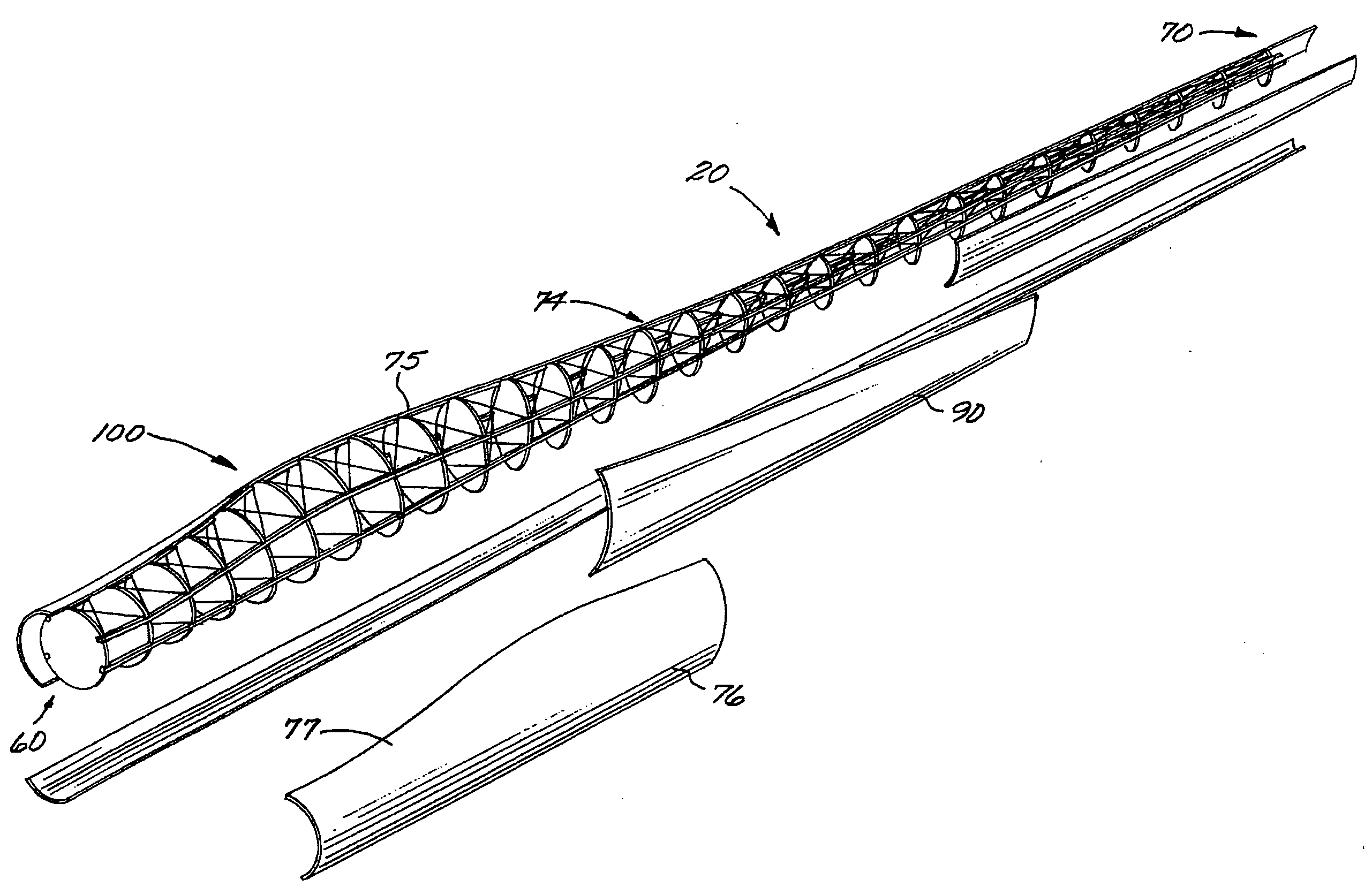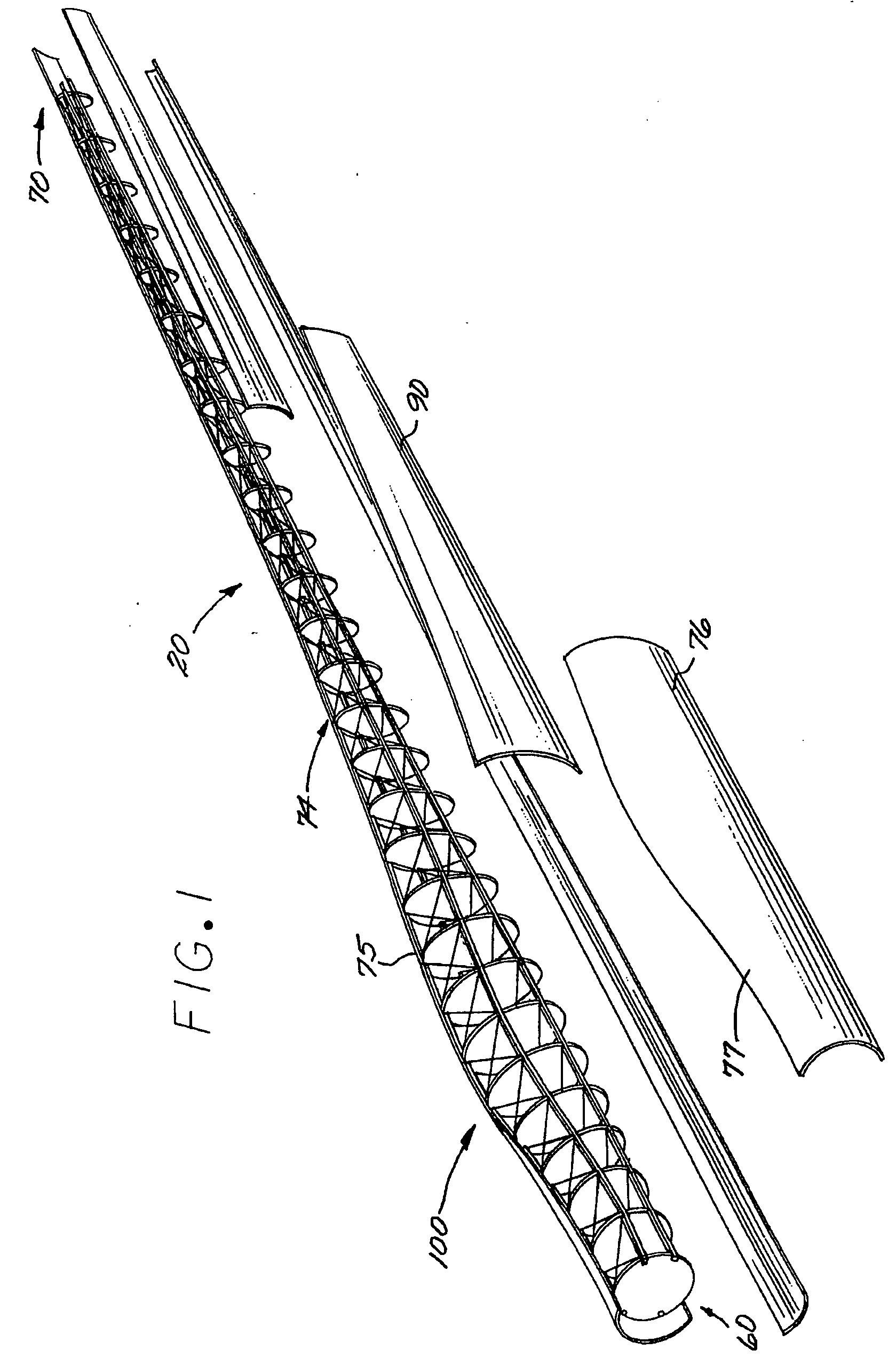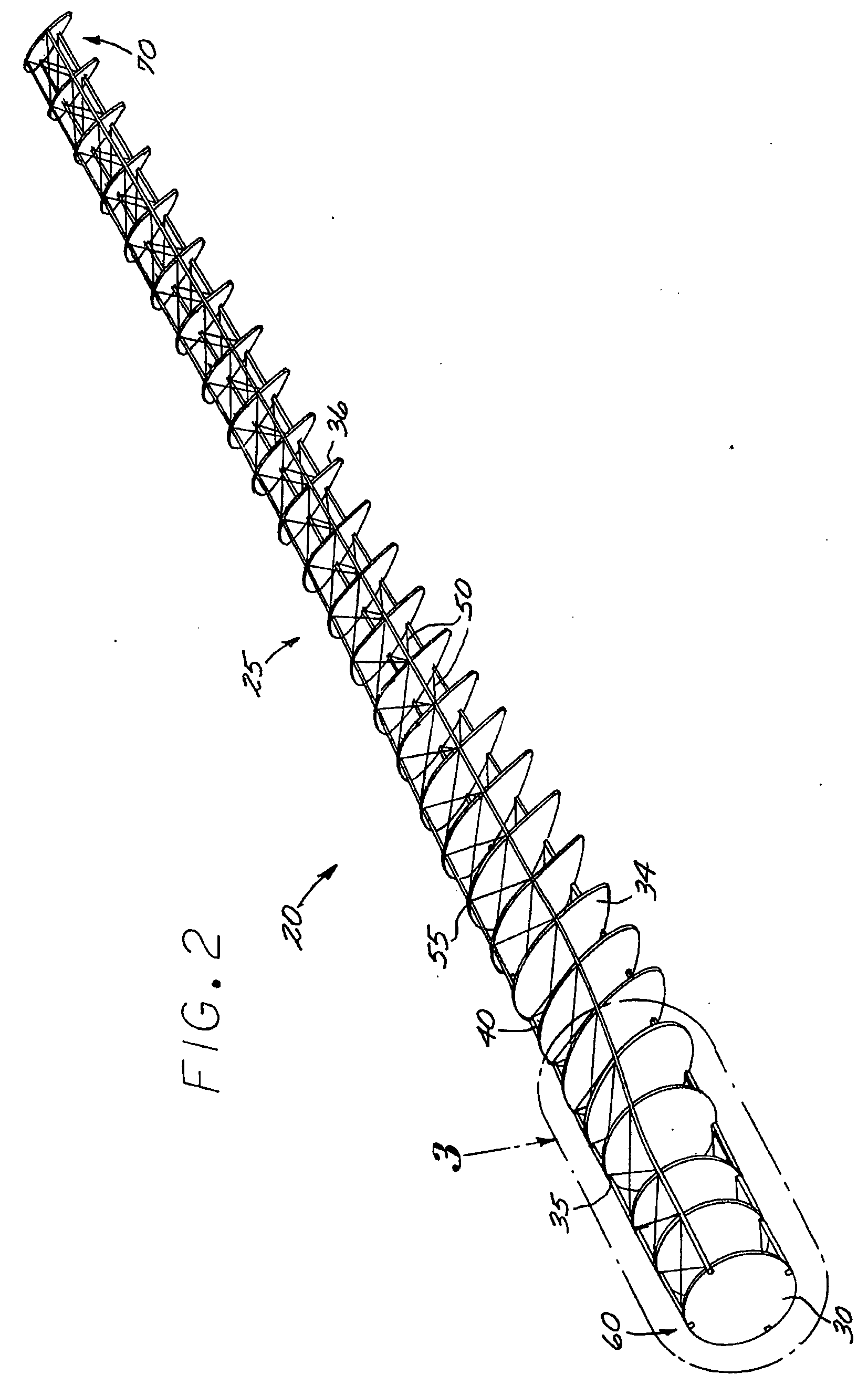Lightweight composite truss wind turbine blade
a wind turbine blade and composite technology, applied in the direction of rotary propellers, machines/engines, mechanical equipment, etc., can solve the problems of wind power having a high proportion of up-front costs, fossil fuels such as coal and petroleum, now being shunned,
- Summary
- Abstract
- Description
- Claims
- Application Information
AI Technical Summary
Problems solved by technology
Method used
Image
Examples
Embodiment Construction
[0033]There are some landscapes where the windspeed is too low for some wind turbine blades to harvest the surrounding air. In many instances, the blades are unable to harvest the air and rotate about their turbine axis because the blades are too heavy and / or to short to effectively capture relatively low-speed winds. At the heart of some overweight and undersized wind turbine blades is a core support structure that is inefficiently designed to provide weight and low rotational inertia suitable for capturing energy in low wind speed areas. As described herein, Applicants have invented a new wind turbine blade utilizing a core support structure which provides a blade of reduced weight which still meets the structural needs or requirements of a turbine blade.
[0034]As shown in FIG. 1, the wind turbine blade 100 of the subject invention includes a relatively lightweight airfoil that exploits the efficiency of a substantially lightweight composite support truss structure 20 which extends...
PUM
| Property | Measurement | Unit |
|---|---|---|
| length | aaaaa | aaaaa |
| thick | aaaaa | aaaaa |
| length | aaaaa | aaaaa |
Abstract
Description
Claims
Application Information
 Login to View More
Login to View More - R&D
- Intellectual Property
- Life Sciences
- Materials
- Tech Scout
- Unparalleled Data Quality
- Higher Quality Content
- 60% Fewer Hallucinations
Browse by: Latest US Patents, China's latest patents, Technical Efficacy Thesaurus, Application Domain, Technology Topic, Popular Technical Reports.
© 2025 PatSnap. All rights reserved.Legal|Privacy policy|Modern Slavery Act Transparency Statement|Sitemap|About US| Contact US: help@patsnap.com



